Hoosier History Live is an independently produced new media project about Indiana history, integrating podcasts, website, newsletter, and social media, created and produced by Molly Head. Its original content comes initially from a live with call in weekly talk radio show hosted by author and historian Nelson Price. You can hear the show live Saturdays from noon to 1 pm ET. It’s over the air in Central Indiana at WICR 88.7 fm, or you can stream at the WICR HD1 app on your phone.
October 07, 2023
Graverobbing conspiracies of early 1900s

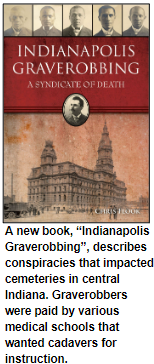 It's a creepy chapter of Indiana's history, but probably appropriate to explore during the season known for all things ghastly. Graverobbing in central Indiana had been an "open secret" for decades before several arrests in 1902 and subsequent trials drew national attention, according to Chris Flook, a public historian and senior lecturer at Ball State University's department of media.
It's a creepy chapter of Indiana's history, but probably appropriate to explore during the season known for all things ghastly. Graverobbing in central Indiana had been an "open secret" for decades before several arrests in 1902 and subsequent trials drew national attention, according to Chris Flook, a public historian and senior lecturer at Ball State University's department of media.
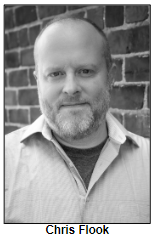 Rings of graverobbers in Indianapolis and Hamilton County had been plundering small cemeteries in the Hoosier capital city and rural cemeteries. They sold corpses to various medical schools that were desperate for cadavers. (These medical schools predated the formation of – and were unaffiliated with – the I.U School of Medicine.) Chris Flook, who will be Nelson's studio guest, describes the grisly conspiracies in a new book, "Indianapolis Graverobbing: A Syndicate of Death".
Rings of graverobbers in Indianapolis and Hamilton County had been plundering small cemeteries in the Hoosier capital city and rural cemeteries. They sold corpses to various medical schools that were desperate for cadavers. (These medical schools predated the formation of – and were unaffiliated with – the I.U School of Medicine.) Chris Flook, who will be Nelson's studio guest, describes the grisly conspiracies in a new book, "Indianapolis Graverobbing: A Syndicate of Death".
Key figures in the graverobbing rings included Rufus Cantrell, an itinerant African American preacher known as the "King of the Ghouls", and his competitor, Hampton West, a white, former Confederate soldier who was based in Hamilton County. They were hired to ransack cemeteries by the medical schools, including the Central College of Physicians and Surgeons, that sought cadavers to use in training students. In his book, Chris Flook describes the impact of racism in the arrests and trials of the conspirators.
"Racism played a decisive role in how the participants were adjudicated", Chris notes. "The Black graverobbers received a disproportionate amount of blame and punishment for a criminal conspiracy created, managed and maintained by white doctors at some of the medical schools."
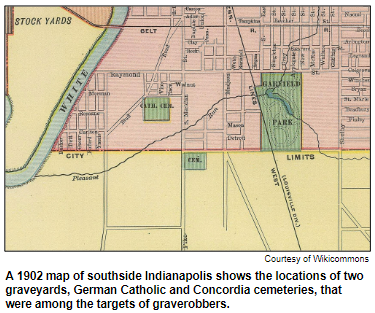 Chris, who writes a column titled "Bygone Muncie History" for the Muncie Star-Press and produces award-winning documentaries, has been a guest on previous "Hoosier History Live" shows. They have included two shows in 2014: a program about county courthouse squares across Indiana and a show about the state's Lenape (Delaware) Indian heritage in connection with a documentary that he produced, "The Lenape on the Wapahani River".
Chris, who writes a column titled "Bygone Muncie History" for the Muncie Star-Press and produces award-winning documentaries, has been a guest on previous "Hoosier History Live" shows. They have included two shows in 2014: a program about county courthouse squares across Indiana and a show about the state's Lenape (Delaware) Indian heritage in connection with a documentary that he produced, "The Lenape on the Wapahani River".
"Body snatching did eventually die out in Indiana after the trials, but not because of them", Chris writes. "Modern embalming methods allowed medical schools to stockpile cadavers."
"Hoosier History Live is a bright spot in my media constellation. I also frequently forward your weekly enewsletters to friends around the globe. I may now be a Californian, but my Hoosier interest is endless. The podcasts and streaming are good tools. By all means, persevere!"
- Tom Cochrun, former news anchor, WTHR-TV Channel 13 Indianapolis

Your contributions help keep Hoosier History Live on the air, on the web and in your inbox!

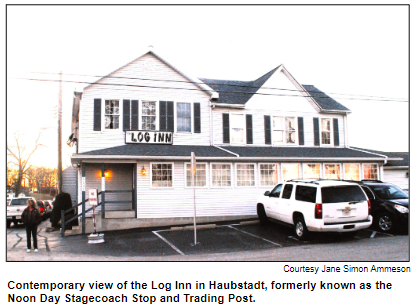
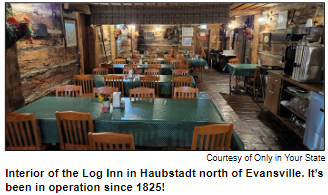 Guest Roadtripper and author and travel writer
Guest Roadtripper and author and travel writer 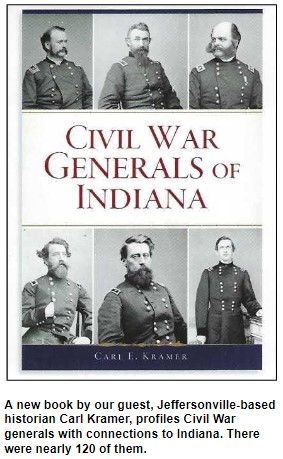
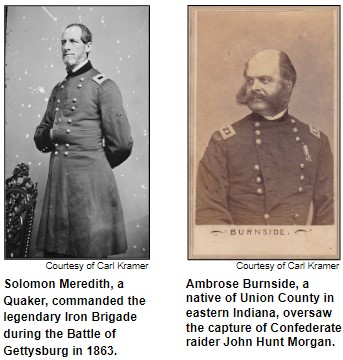

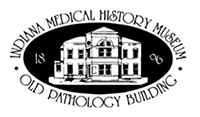
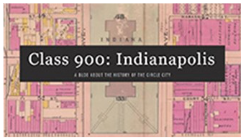


 At the top of our newsletter and website we put notice, and links, to our newly published podcasts. We also provide a link to
At the top of our newsletter and website we put notice, and links, to our newly published podcasts. We also provide a link to 

